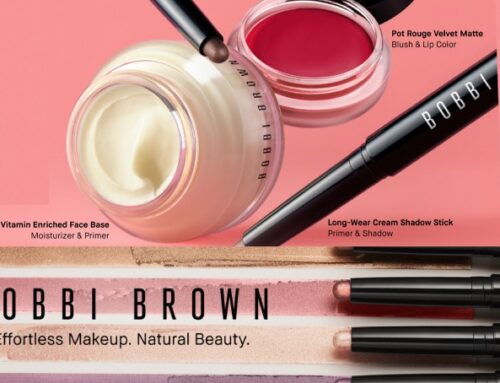Are Tariffs Impacting Cannabis Prices? Everything You Should Know
June 3, 2025
Oh great, my cannabis is at risk too. First, it was my wedding flowers, now it’s my marijuana flower.
Due to federal laws, importing or exporting cannabis is illegal. So all the cannabis you consume is homegrown, which is great news for those of us who like to get high to dull the tariff whiplash.
However, the fluctuating tariffs are still hurting the cannabis sector. It’s easy to think that an industry like this, where the main product is produced here, is safe. Sadly, it’s much more complicated than that.
The pretty packaging your gummies come in? The glass tubes that hold your pre-rolls? The lights used to grow your Sour Diesel flower? These are all at the mercy of Trump’s tariffs.
With the ongoing trade uncertainty, American companies have reported that orders from Canadian cannabis companies have dropped. Many brands exported cannabis-related goods, like rolling papers, types of hemp seeds, and handblown glassware, to Canada. Some cultivation materials are also imported from Canada, such as types of wood, compost, and peat used to grow cannabis plants.
The Canadian cannabis market was worth $3.25 billion in 2024. And it’s only growing. This is just a fraction of America’s cannabis market, but Canadian brands want to safeguard themselves in case tariffs on cannabis worsen or stay high.
Canada doesn’t want to rely too heavily on the United States for its cannabis products. And American growers have to consider sourcing growing materials from inside the U.S. The cannabis friendship between us isn’t over, but we’re definitely sending each other memes less these days.

America relies on China for equipment to grow cannabis, including machinery, packaging materials, and cannabis accessories. Plastic is the big one (as always), but materials like glass and certain metals are also sourced from China.
Think about all the plastic involved in your cannabis products. From the colorful disposable vapes to the artistic gummy bags and the attractive drink bottles, plastic is crucial in this industry.
Many companies are sourcing from alternative locations, like Malaysia, Indonesia, and other parts of Southeast Asia. But sourcing from these countries can cost 10-20% more than what China was charging. These extra costs are being passed onto consumers, especially when it comes to small businesses that can’t afford to absorb the cost.
It can be annoying when people call crappy news a “blessing in disguise.” But that’s how some people in the cannabis industry feel. They see this shift as an opportunity to bring the whole cannabis industry, or at least most of it, back to the United States.
Reducing reliance on China can help businesses diversify their production strategy. Ultimately, this could strengthen the industry’s supply chain, which boosts the entire sector and makes it more resilient to future shenanigans. It also forces companies to innovate, especially when it comes to packaging. Considering the immense plastic waste on the planet, encouraging cannabis companies to use more sustainable packaging is a win for consumers and the planet.
Of course, high labor costs are a major hurdle. Every single sector in America is facing this problem, as paying Americans is not cheap. Full production in the United States is likely infeasible, but redistributing manufacturing will result in a strong cannabis sector, hopefully.
Vapes: The hardware needed to create vaporizers, both disposable and reusable, mostly comes from China.
Glassware: Handblown bongs and bubblers are safer from tariffs, but the mass-produced pipes and glass tubes hail from Chinese factories.
Plastic Packaging: As mentioned, the packaging is a massive problem, not so much the actual cannabis.
Cultivation Equipment: This one stresses me out. Grow lights from China and composted soil from Canada are just two examples of cultivation supplies we get imported. If we can’t sustainably grow cannabis on our own, the industry is in real trouble.
Don’t shoot the messenger. Cannabis products are likely going to rise in cost. Very soon. The industry has already seen a slowdown in ordering. So, how can we help ourselves stay high?
I don’t have any life-saving advice. But I plan to focus on the products that use less plastic and other imported materials (like choosing flower over vape cartridges) and shopping small whenever I can. I love the big cannabis companies, but they have more financial cushion for those pushin’ tariffs on cannabis. Mom and Pop cannabis shops need extra support during this time. Keep that in mind when you hit the dispensaries or shop online.
If the rising prices and ever-changing tariffs are stressing you out, these products might be your best choice right now.
For now, cannabis cultivation is safe, so choosing OG flower over vapes is a smart move. Try the Durban Poison THCa Indoor Flower and enjoy the uplifting sensation.
With the NuLeaf Delta-9 THC Oil, you can ration your cannabis use. I have a tincture in the back of my cabinet that I’ll be hanging onto “in case of an emergency.”
Lastly, the Cheef Botanicals Sex Panther THCa Flower is another federally legal flower option that supports cultivators and uses less packaging than many other products.
Cheef Botanicals
Sex Panther THCa Flower (opens in a new window)
Search
RECENT PRESS RELEASES
Related Post
 (opens in a new window)
(opens in a new window) (opens in a new window)
(opens in a new window) (opens in a new window)
(opens in a new window)



